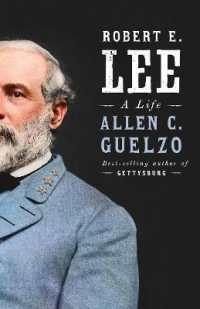- ホーム
- > 洋書
- > ドイツ書
- > Humanities, Arts & Music
- > Arts
- > history of arts
Description
(Short description)
The almost invisible images of a hitherto unknown painter called Eusebius, who worked in San Vitale Ravenna and in Vivarium, are a gallery of portraits of his famous contemporaries such as Theodoric, Vitiges, Amalasunta and a visual commentary of Justinian's tyrannical behaviour. A Study on Scarcely Visible or even Hidden Texts in Late Antique Manuscripts and Mosaics
(Text)
The almost invisible images of a hitherto unknown painter called Eusebius, who worked in San Vitale Ravenna and in Vivarium, are a gallery of portraits of his famous contemporaries such as Theodoric, Vitiges, Amalasunta and a visual commentary of Justinian's tyrannical behaviour. Living between two ages, without belonging to either, this solitary man represents the fullest embodiment of a type of cultural "hybridisation" that is well attested throughout history. Eusebius is a spiritual brother of those "hybrid" artists, who have left extraordinary examples of "grotesques" populated by fantastic beings. After having embodied for so long the unbiased tolerance which had been the core of his own life and those of his companions in Ravenna: that mixture of confidentiality, intelligence, pointed irony, fantasy, and - why not? - touch of madness which had helped him to navigate through the troubled waters of his age, always leaving at the margins the demons who haunted him.
(Author portrait)
Prof. Fabio Troncarelli studied in Rome, Paris (Ecole des Hautes Etudes), London (The Warburg Institute), Chicago (The Divinity School), and Yale (The Beinecke Library). He taught Latin Paleography at the Universities of Rome, Florence, and Viterbo. He has published several books and many articles in international journals such as Scriptorium, Revue d'Histoire des Textes, and Mediaeval Studies.







